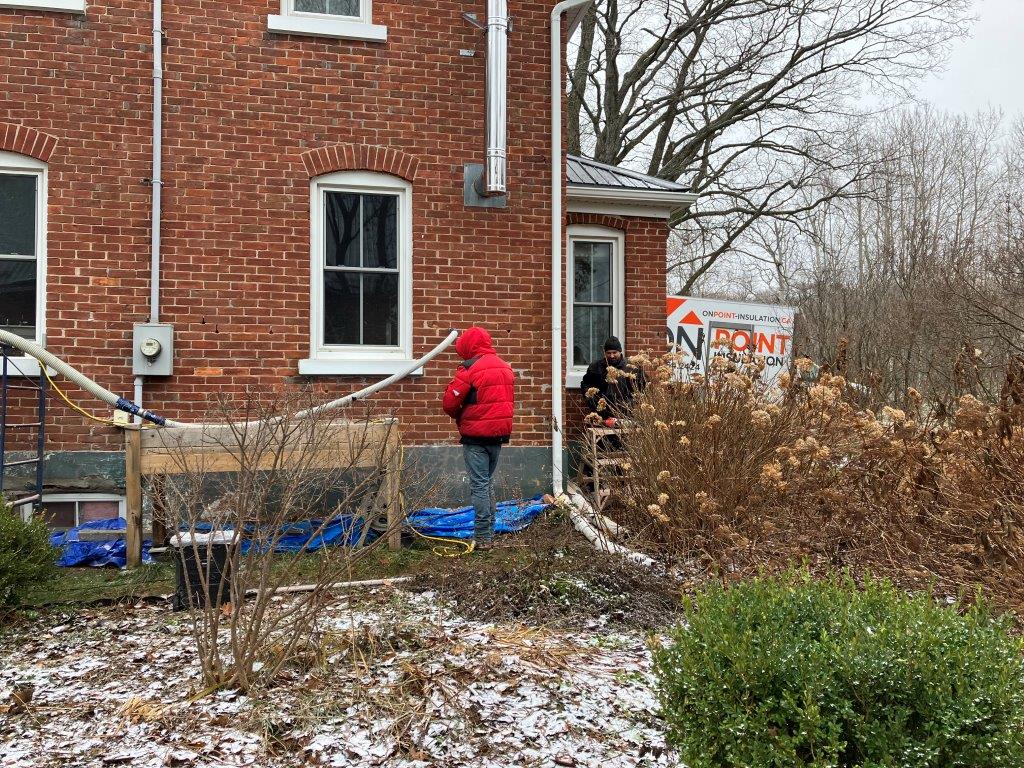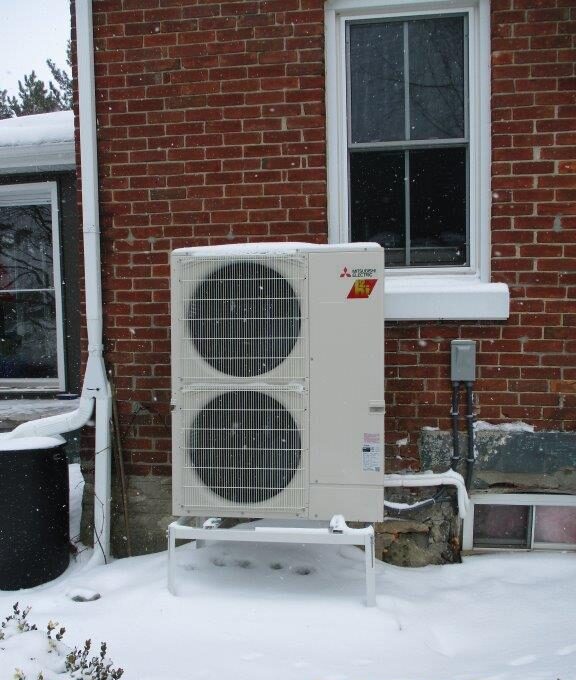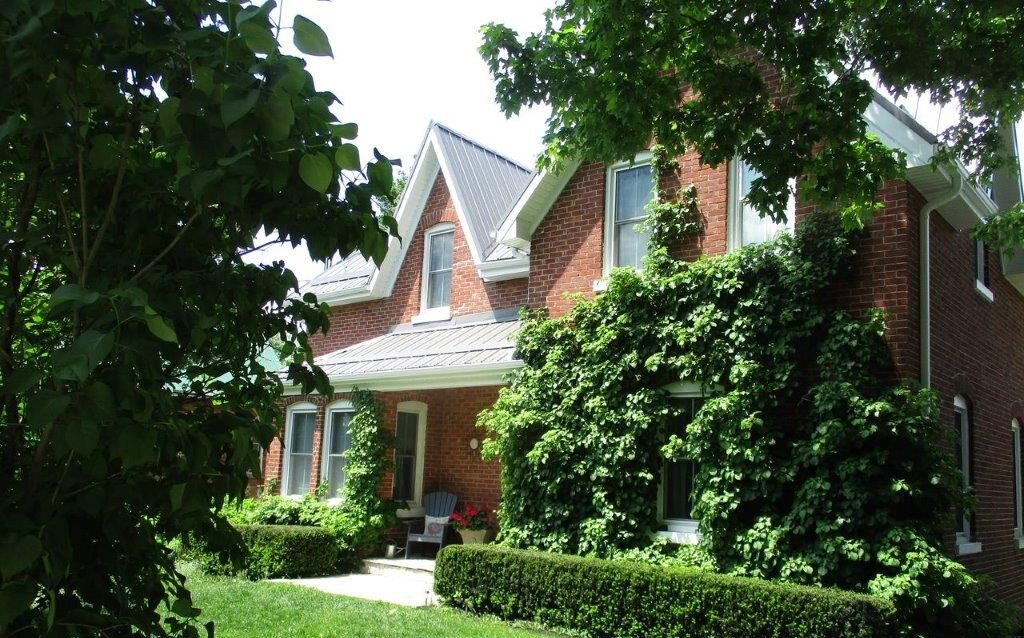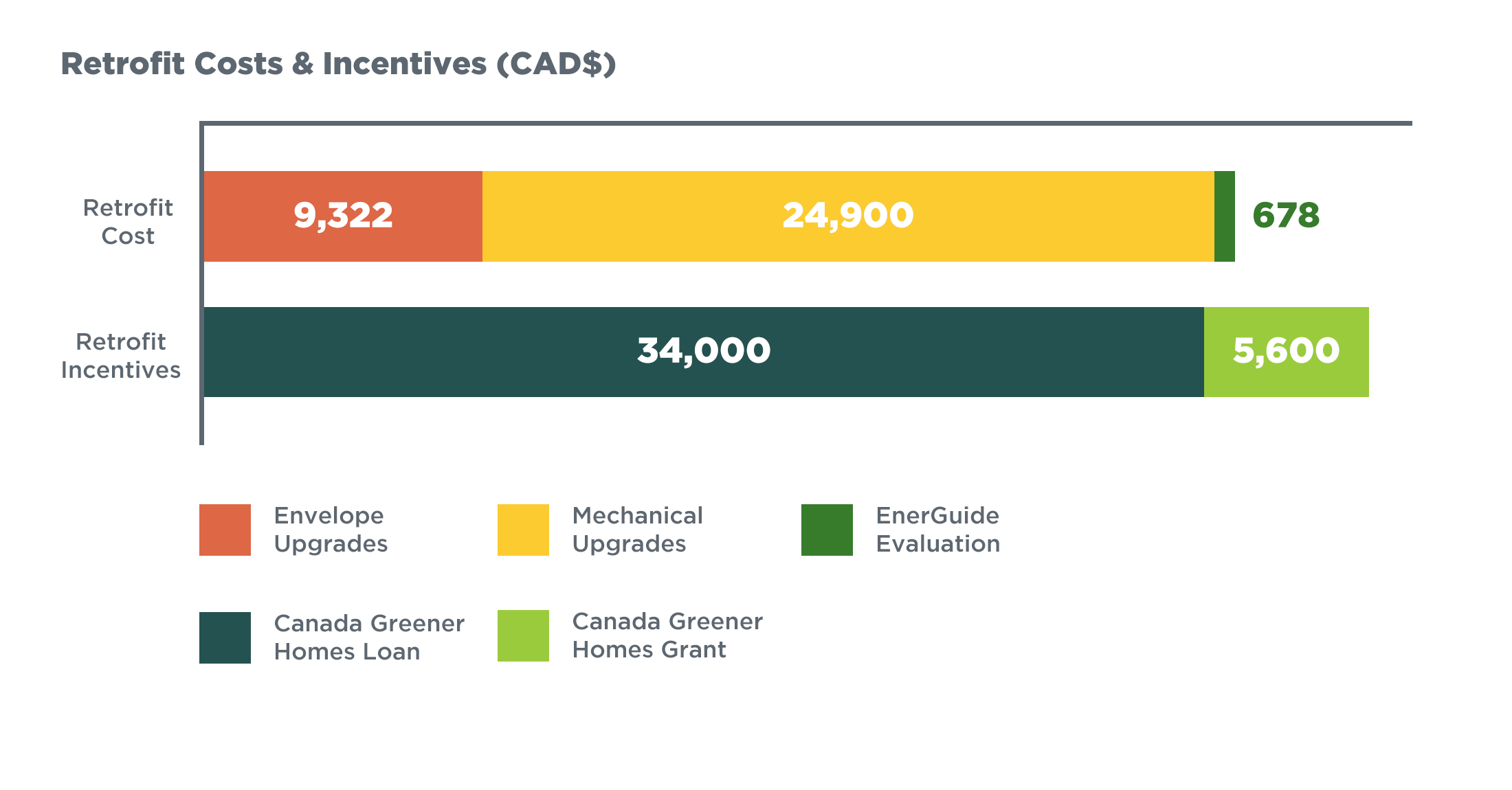In the picturesque hamlet of Walters Falls in central Ontario, Barb Sheperd had decided it was time to bring her 2,600 square foot detached, red-brick 19th-century former church manse into the 21st century by deeply retrofitting it into a forever home for the future.
Her retrofit was able to take her leaky 1897 house from using 217 GJ of energy a year down to just 84 GJ—a 61% reduction that achieved 133 GJ of deep energy savings!
| Retrofit at a Glance | |
| Starting Point | Retrofit Results |
| 217 GJ EnerGuide Rating | 84 GJ EnerGuide Rating (61% energy savings) |
| Air-leakage rate of 10.1 ACH50 | Air-leakage rate reduced 29% to 7.2 ACH50 |
| Attic insulation R31 | / |
| Wall insulation R0 | Wall insulation to R21 with cellulose |
| Basement insulation R10 | / |
| / | Heat loss reduced by 39% |
| 83% efficient gas furnace | Added a Zuba ccASHP for heating and cooling |
| Built 1897 | Retrofit 2023 |
| / | GHGs down 94% |

The Home Retrofit Journey
It all started when Barb Sheperd’s woodstove installer found absolutely zero insulation behind her lath and plaster walls. Her neighbour recommended an energy advisor from a local climate action organization, Environment Network.
When Sheperd’s energy advisor came out to the house in May 2022, she sealed up the house and did a blower door test. Sheperd noted that, “She was just amazing and answered every question so quickly. I really leaned on her for her advice—she was a huge help. She was always there and super hands-on. She was great at helping me through the paperwork for the rebate.” Her advisor recommended that she prioritize adding insulation to her house’s envelope and switch her oil furnace to a heat pump.

The insulation contractors externally pumping in cellulose insulation.
In December 2022, the insulation company took just two days to drill into the brick and pump the cellulose insulation into the wall cavity from their truck. In the two months between then and when Sheperd’s oil furnace was replaced with a cold-climate heat pump, she noticed that she still had oil in the tank, “What a surprise! Normally, I would’ve gone through a tank and filled up another already. It was a great gauge on how invaluable insulation is—I was using a third less oil than I was before. So, if people only have one choice right now: I would insulate first—I really would; I couldn’t believe the difference it made!”
Sheperd’s energy advisor suggested that she get a range of quotes from different contractors and helped her figure out how to pick out a good system for her situation. She got three contractor quotes and sent them to her energy advisor, just to make sure that they qualified for the rebate. When the heat pump contractors came to install her heat pump in February 2023, they realized that the indoor unit was too tall for her basement and ended up orienting it on its side and constructing supports for its placement. On the experience, she said, “It actually was the weekend where it was -40°C. We turned it on, and I blurted out, ‘Oh my god, it’s working!’ Everyone’s always asking me, ‘You got a heat pump? How is it? Does it work when it’s cold?’ I was like, ‘As a matter of fact, it does! It’s quiet, it’s efficient, it works in cold weather and even in a snowstorm!’”

The cold-climate heat pump working wonders on a cold wintry day.
Sheperd had a contractor-friend help her with draft-proofing on the cracks in her leaky house. As for the other costs, she had paid for the work through her line of credit. Sheperd took advantage of the Canada Greener Homes Loan because it provided interest-free financing.
CMHC notified her that they had reviewed her financing request and, a week later, Sheperd got an e-mail approving her funding request for $34,000. Ten days after that, the amount was automatically deposited to her bank account.
The Retrofit’s Benefits

The house had previously been retrofitted with a durable metal roof some years earlier.
Barb Sheperd’s deep energy retrofit made an immense difference to the comfort in her house. Before the retrofit, her upstairs floor never warmed up and heating with oil was exorbitantly expensive. On the improved comfort in her home, Sheperd said, “My friend said, ‘Your house is so warm now, Barb!’ I said, ‘I know! For ten years, I lived in a freezer!’”
Sheperd enjoys the quiet operation of the heat pump compared to her old oil furnace, which roared as it fired up. With the heat pump, her home also benefits from the steady movement of air compared to the intermittent heating of the oil furnace.
At the end of the day, having comfort, saving money, and the peace-of-mind of having a greener home have been great for Sheperd.

Barb Sheperd enjoying her comfortably cool in the summer and warm in the winter home with her Great Dane, Oliver.
Financial and Climate Goals
Barb Sheperd made two major upgrades to her house with help from the Canada Greener Homes Grant and Canada Greener Homes Loan. Through the grant, she got $5,000 back for her retrofit and $600 to help cover the professional services of her energy advisor. For her insulation, including installation, she paid $9,322. For her heat pump, including installation, it cost $24,900. In total, her retrofit cost $34,222. For her pre-retrofit EnerGuide evaluation, she paid $452 (including taxes) and $226 for post-retrofit evaluation. After the rebates, the cost dropped from $34,900 down to $29,300.

Where Sheperd’s home is located, space heating is typically limited to one of two options: oil or propane. Her and her neighbours always wondered if they should all switch to propane because the costs just kept climbing. Before the retrofit, she was paying $5,640 for her heating oil and $1,160 for her hydro bill. After her deep energy retrofit, she’s now just paying $2,400 a year for electricity—that’s an annual energy savings of $4,400. Even when accounting for her annual loan repayment of just under $4,000, she’s still saving just over $1000 a year.
Sheperd is now saving money, has peace of mind knowing that her house is having less impact on the environment, and has a boosted resale value.


Recent Comments